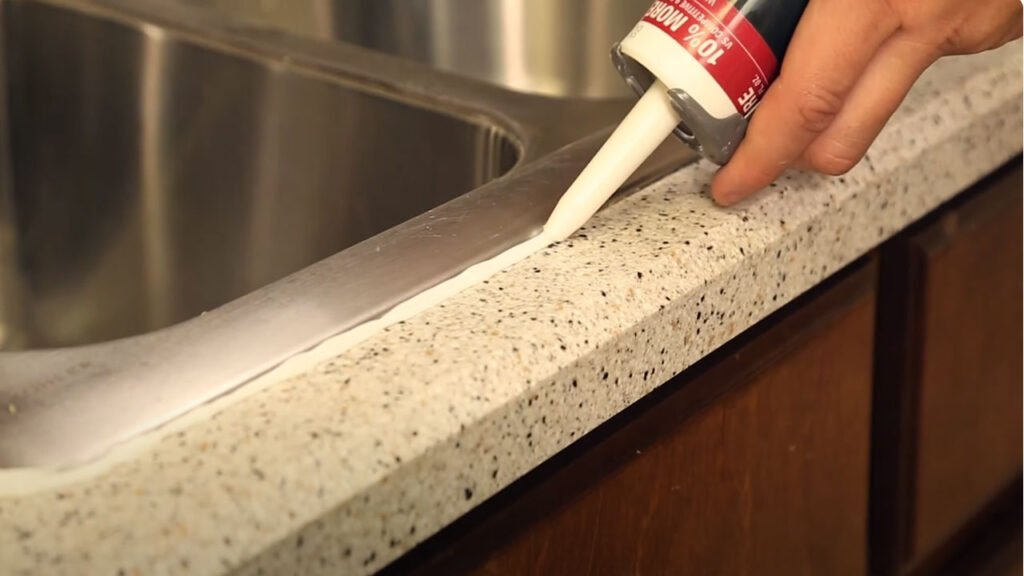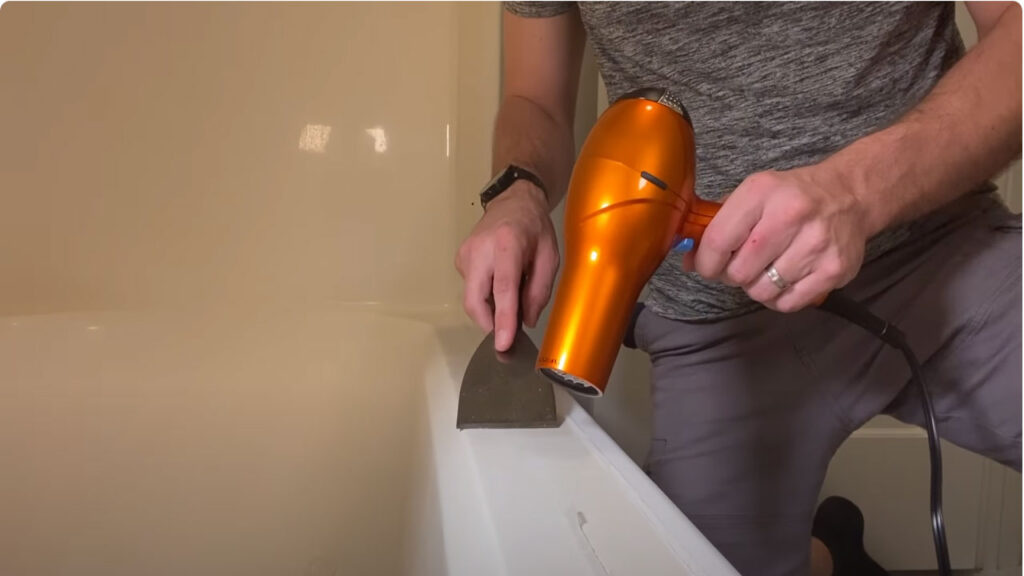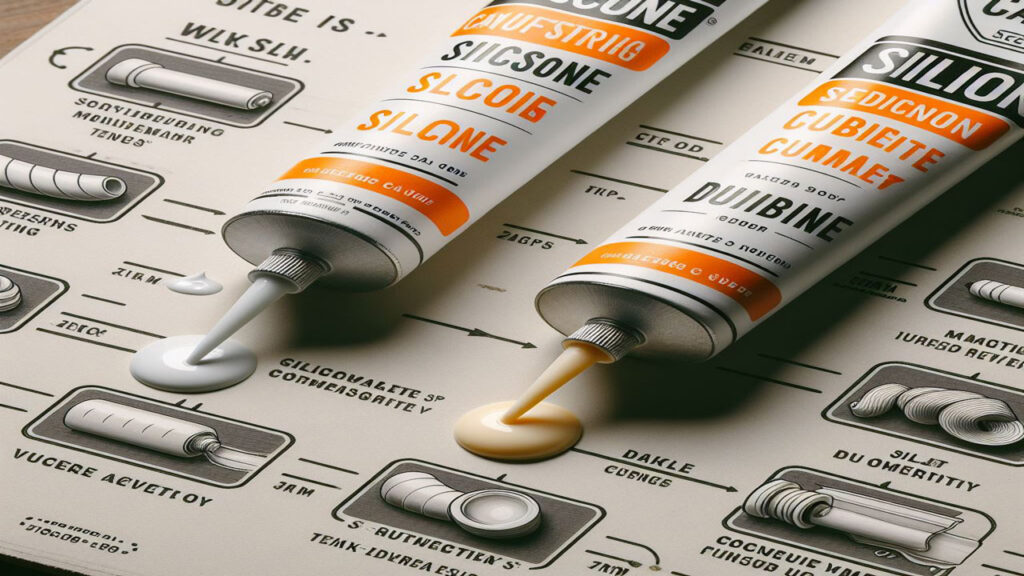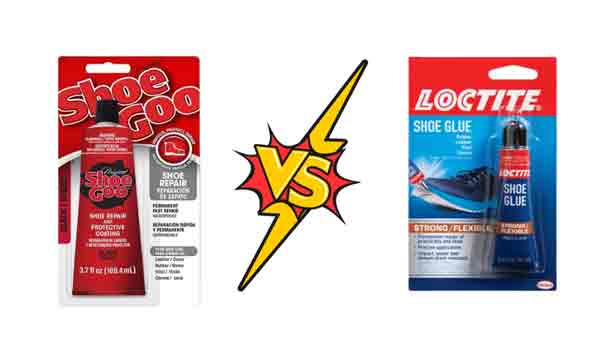Silicone Caulk Vs Latex: Which Holds Up Best?
Silicone Caulk Vs Latex: Silicone reigns supreme in durability, remaining flexible and resisting extreme temperatures, UV rays, and harsh chemicals. Latex, while suitable for indoor applications, can crack and shrink over time, especially when exposed to moisture.
Latex caulk is cheaper, easier to paint, while silicone is more expensive and not easy to apply.
Silicone creates a superior watertight seal, making it ideal for areas like bathrooms, kitchens, and exteriors. Latex offers moderate water resistance, suitable for low-moisture areas like baseboards and trim.
Both caulks adhere well to various surfaces, but silicone excels at bonding to non-porous materials like glass, metal, and tile. Latex works best on porous surfaces like wood and drywall.
Unveiling the nuances between silicone caulk vs latex is crucial for optimal decision-making in sealing and enhancing your living spaces we will also discuss Silicone vs. Siliconized Acrylic Caulk.
What Is The Difference Between Latex And Silicone Caulking?
Silicone caulk and latex caulk are both types of sealants that are used to fill gaps and seal joints but they have distinct differences in their properties and ideal applications. Here’s a difference between silicone and latex:
| Feature | Latex Caulk | Silicone Caulk |
| Main Component | Acrylic resin and latex | Silicone |
| Flexibility | Less flexible, can crack or shrink over time | Highly flexible, accommodates movement and vibration |
| Water Resistance | Moderately water resistant | Excellent water resistance, waterproof |
| Durability | Less durable, can break down over time | Highly durable, lasts for years even in harsh conditions |
| Paintability | Yes | Yes |
| Temperature | 40 -80 degrees Fahrenheit | between 4°C and 32°C |
| Strength | 125 – 175 psi | 58.0 – 31900 psi |
Is silicone better than caulk?
Silicone isn’t necessarily “better” than caulk; it depends on the specific application and desired properties. Here’s a breakdown to help you decide:
Silicone Caulk:
- Excellent water resistance: Ideal for bathrooms, kitchens, exteriors, and anywhere exposed to moisture.
- Highly flexible: Withstands movement and temperature changes, making it perfect for areas prone to expansion and contraction.
- Durable: Lasts longer than latex caulk, especially in harsh environments.
- Difficult to paint: Not generally paintable, limiting its aesthetic options.
- Stronger adhesion: Bonds well to non-porous surfaces like glass, metal, and tile.
Latex Caulk:
- More affordable: Generally less expensive than silicone caulk.
- Paintable: Can be painted to match surrounding surfaces.
- Moderate water resistance: Suitable for low-moisture areas like baseboards and trim.
- Less flexible: May crack over time, especially outdoors, and in areas prone to movement.
- Shorter lifespan: May need to be reapplied more frequently than silicone.
In summary:
- Choose silicone caulk for superior water resistance, flexibility, durability, and strong adhesion, especially in high-moisture areas, exteriors, and non-porous surfaces.
- Choose latex caulk for a more affordable option, paintability, and applications in low-moisture areas and porous surfaces, where frequent reapplication might be acceptable.
How to Choose Caulk and Sealant for Every Home Project
Choosing the right caulk or sealant for your home project can be overwhelming, but it’s crucial for a successful and long-lasting result. Here’s a guide to help you navigate the options:
1. Consider the Location:
- High-moisture areas: Opt for silicone caulk due to its superior water resistance. Ideal for bathrooms, kitchens, and exteriors.
- Low-moisture areas: Latex caulk is sufficient for areas like baseboards, trim, and interior walls (except showers and tubs).
2. Analyze the Surface:
- Non-porous surfaces: Choose silicone caulk for excellent adhesion to glass, metal, and tile.
- Porous surfaces: Latex caulk works well on wood, drywall, and plaster.
3. Evaluate Flexibility and Durability:
- High flexibility and long-lasting: Silicone caulk withstands extreme temperatures, UV rays, and harsh chemicals, making it ideal for demanding applications.
- Moderate flexibility and suitable for indoor use: Latex caulk might crack over time, especially outdoors.
4. Consider Paintability:
- Paintable: Choose latex caulk for aesthetic purposes when painting is desired.
- Not paintable: Opt for silicone caulk when paintability is not a priority but superior water resistance is needed.
5. Additional Factors:
- Size of gaps: Use caulk for smaller gaps (up to 1/4 inch) and sealant for larger gaps and cracks.
- Color: Choose a caulk or sealant that matches the surrounding surfaces for a seamless look.

What Is Silicone Caulk?
Silicone caulk, also commonly referred to as silicone sealant, is a type of adhesive sealant widely used in construction, home improvement, and various other applications.
What Is Silicone Caulk Made Of?
Its key characteristic lies in its composition:
- Silicone polymers
- Fillers
- Pigments
- Additives
What Are The Different Types Of Caulk?
There are several main types of caulk, each with its own strengths and weaknesses, making them suitable for different applications:
1. Acrylic Latex Caulk
Water-based, containing acrylic resin and latex. Sealing gaps around windows, doors, trim, and other interior applications.
2. Silicone Caulk
Made from silicone polymers, offering superior flexibility and durability. Sealing gaps around bathtubs, showers, countertops, sinks, and outdoor applications.
3. Vinyl Latex Caulk
Similar to acrylic latex but with added vinyl for increased durability and moisture resistance. Sealing gaps around windows, doors, trim, and some exterior applications.
4. Polyurethane Caulk
Made from polyurethane, offering excellent flexibility and adhesion. Sealing gaps around expansion joints, cracks in concrete or masonry, and some high-movement applications.
5. Butyl Rubber Caulk
Made from synthetic rubber, offering excellent adhesion and flexibility. Sealing gaps around roofs, gutters, flashing, and other exterior applications.
What Is Silicone Caulk Used For?
- Sealing gaps and cracks in windows and doors
- Waterproofing and sealing seams in bathrooms and kitchens
- Bonding and sealing glass, metal, and ceramic surfaces
- Filling and sealing joints in plumbing and HVAC systems
- Preventing air and water infiltration
- Providing a flexible and durable seal
- Resisting mold and mildew growth
- Adhering and sealing various building materials
What Are The Pros And Cons Of Silicone Caulk?
Pros of Silicone Caulk
- Highly durable and weather-resistant
- Excellent flexibility
- Silicone caulk bonds well to various surfaces, including glass, metal, ceramic, and some plastics.
- Water-resistant
- Wide range of colors
- Available with specific features
Cons of Silicone Caulk
- Not paintable (except for specific types)
- May require specific primers
- Can be messy to apply
- Some types of silicone caulk can have a strong odor during application.
- Can be more expensive than other options
Read More How To Use Silicone Sealant Without Gun
What Is The Difference Between Silicone And Caulking?
Silicone is a type of caulk, but not all caulk is silicone. Silicone offers superior flexibility, water resistance, and durability. However, it’s trickier to apply and clean, and not paintable.
Regular caulk, often latex-based, is easier to use and paint, but is less flexible and water resistant, making it better for interior trim and non-shower/bath areas.
Why Is Silicone Caulk So Expensive?
Silicone caulk’s high cost stems from several factors, including:
- Complex manufacturing process: Converting sand to high-purity silica and subsequent chemical processes contribute to the cost.
- Expensive raw materials: Copper and hydrogen fluoride, needed in production, are relatively costly.
- Limited economy of scale: Compared to the vast petrochemical industry, silicone production has a smaller scale, impacting per-unit cost.
Can You Use Caulk On Cement?
You can use caulk on cement, but only specific types. Silicone caulk is ideal for sealing cracks and joints due to its superior flexibility and water resistance. Avoid using latex caulk as it’s less durable and water-resistant for concrete applications.
Is Silicone Caulk Waterproof?
Silicone caulk is technically highly water resistant, not completely impermeable. It forms a strong barrier against water penetration but may allow minimal water passage over extended periods or under extreme pressure.
Can I Use Silicone On Concrete?
While some neutral-cure silicones are suitable for concrete, standard acidic cure silicones are not. The acidic nature of standard silicone can react with the alkaline concrete, causing weak adhesion and potential discoloration.
How Strong Is Silicone Caulk?
silicone caulk offers adhesion strength exceeding 58.0 – 31900 psi, making it suitable for various sealing applications.
Is Silicone Sealant The Same As Caulk?
While often used interchangeably, silicone sealant is a type of caulk. Caulks encompass a broader range of materials like acrylic latex, while silicone sealant specifically refers to those made primarily from silicone polymers, offering superior flexibility and water resistance.
Can You Use Silicone On Plastic?
Yes, silicone can be used on some plastics, but compatibility varies. Always check the specific type of plastic and the silicone product information for best results.
How Long Does Silicone Caulk Last?
Properly applied silicone caulk can last 10 to 20 years, depending on factors like quality and exposure to elements.
Can I Use Silicone As Glue?
You can technically use silicone as a temporary or non-critical adhesive, but it’s not ideal for strong, permanent bonds. Consider dedicated glues for better results.
How Long Does It Take Caulk To Dry?
Caulk drying involves two stages: drying and curing (full strength). Drying typically takes 30-60 minutes, while curing can take 24 hours to 10 days depending on the caulk type and conditions.
How Do You Apply Silicone Caulk Evenly?
Applying silicone caulk evenly requires preparation and technique. Here’s a simplified guide:
- Clean and dry: Ensure the surface is free of dirt, debris, and moisture.
- Use painter’s tape: Apply tape along both sides of the joint to create a clean line for the caulk.
- Cut the nozzle: Cut the nozzle at a 45-degree angle with a small opening slightly larger than the desired bead width.
- Apply steadily: Hold the caulking gun at a 45-degree angle, apply consistent pressure on the trigger, and smoothly draw the gun along the joint.
- Tool and smooth: Use a wet caulking tool or your finger dipped in soapy water to smooth the bead and remove excess caulk.
- Peel tape carefully: Remove the painter’s tape immediately after smoothing the bead for clean edges.
How To Remove Silicone Caulk
Removing silicone caulk requires a multi-step approach:
- Loosen the caulk: Apply heat with a hairdryer to soften the silicone.
- Cut the caulk: Use a utility knife to carefully cut along the center of the caulk bead.
- Scrape and remove: Use a putty knife or specialized caulk remover tool to remove the bulk of the caulk.
- Clean the surface: Remove any remaining residue with mineral spirits and a rag, followed by wiping with water and soap.

What Are The Side Effects Of Silicone Caulk?
- Skin irritation: Contact with uncured silicone caulk may cause skin irritation.
- Eye irritation: Avoid contact with eyes, as silicone caulk can cause irritation.
- Respiratory irritation: Inhalation of fumes during application may irritate the respiratory system.
- Odor: Silicone caulk emits a strong odor during application, necessitating proper ventilation.
- Allergic reactions: Some individuals may experience allergic reactions.
When Not To Use Silicone Caulk?
Avoid silicone caulk when:
- Painting: It won’t adhere paint, creating a bumpy surface and causing paint to peel.
- Natural stone: It can trap moisture and damage the stone.
- Moving joints: While flexible, it lacks the extreme movement allowance needed for expansion joints.
- Metal surfaces: It might not adhere well to some metals.
- Low-movement applications: Latex caulk is more affordable and easier to use for situations with minimal movement or moisture.
Silicone Vs Siliconized Caulk
- 100% Silicone Caulk: Superior water resistance, flexible, durable, ideal for high-moisture areas (bathrooms, kitchens) and exterior applications.
- Siliconized Caulk: Easier to apply and paint, less durable, cracks over time, not ideal for high-moisture areas.

What Is Latex Caulk?
Latex caulk, also known as acrylic latex caulk, is a water-based sealant commonly used for interior applications. It offers good adhesion, is paintable, and easy to clean up, but is less flexible and water-resistant than silicone caulk.
What Is Latex Caulk Made Of?
Latex caulk is primarily made of acrylic resin combined with latex, offering good adhesion.
What Is Latex Caulk Used For?
- Latex caulk is used for sealing gaps and joints in various surfaces.
- Ideal for interior applications, it adheres well to wood, drywall, and other porous materials.
- Provides a flexible and paintable seal.
- Commonly used in bathrooms, kitchens, and for general home repairs.
What Are The Pros And Cons Of Latex Caulk?
Pros of Latex Caulk
- Easy to clean up with water.
- Low odor during application.
- Quick drying time.
- Flexible and durable.
- Good adhesion to many surfaces.
Cons of Latex Caulk
- Not suitable for wet or high-moisture areas.
- Limited in extreme temperature conditions.
- May shrink over time.
- Less resistant to mold and mildew compared to silicone caulk.
Read Also How To Caulk Windows Inside Like a Pro
How Long Does Latex Caulk Last?
Latex caulk typically lasts around five years before it begins to degrade. Factors such as exposure to sunlight, moisture, and temperature fluctuations can influence its lifespan.
How Fast Does Latex Caulk Dry?
Latex caulk forms a skin in 30 minutes to a few hours and can be fully cured in 24 to 48 hours, depending on the thickness and humidity. Avoid water exposure until fully cured.
What Will Remove Latex Caulk?
Several options can remove latex caulk, including commercial caulk removers, a utility knife, or a strong mineral spirits solution applied with caution.
Can You Paint Over Latex Caulk?
Yes, you can paint over latex caulk after it has dried completely. However, for best results, use a high-quality primer specifically designed for adhering to caulk before applying paint.
Is Latex Caulk Good For Bathrooms?
Yes, latex caulk is suitable for bathrooms. It is water-resistant, flexible, and easy to clean. However, for areas exposed to excessive moisture, a silicone-based caulk might provide better durability.
Can Latex Caulk Freeze?
Yes, latex caulk can freeze, especially if exposed to temperatures below 40°F (4°C). This can damage the caulk and affect its ability to adhere properly. It’s recommended to store and apply latex caulk in moderate temperatures.
Is Latex Caulk Removable?
Fresh latex caulk can often be removed with water and a damp cloth. However, cured latex caulk is more difficult to remove and might require caulk remover or mechanical scraping.
What Temperature Can You Use Latex Caulk?
Latex caulk is typically recommended for use in temperatures between 40 and 80 degrees Fahrenheit. Outside this range, the caulk may not adhere properly or could take longer to cure.
What Will Remove Latex Caulk?
Several options can remove latex caulk, including commercial caulk removers, mineral spirits, or a strong vinegar solution. Always test in an inconspicuous area first and wear gloves and proper ventilation when using chemicals.
Is Latex Caulk Good?
Latex caulk is a versatile and commonly used sealant. It is effective for interior applications, easy to use, and paintable. However, it may not be as durable as silicone caulk in wet or high-moisture areas.
What Is The Best Latex Caulk?
Some highly-rated options include:
- DAP Alex Plus All-Purpose Acrylic Latex Caulk: A versatile and affordable choice for various interior applications.
- GE Silicone II Latex Sealant: A good balance of affordability, ease of use, and water resistance.
- Image of GE Silicone II Latex SealantOpens in a new window
- Sashco Big Stretch Latex Caulk: Known for its exceptional flexibility and gap-filling capabilities.
Why Won’t My Latex Caulk Dry?
There are a few reasons why your latex caulk might not be drying properly:
- High humidity: Latex caulk dries by evaporation, and high humidity hinders this process.
- Insufficient air circulation: Ensure proper air circulation around the caulked area to facilitate drying.
- Over-application: Applying too much caulk can slow down drying time. If possible, remove excess caulk and reapply a thinner layer.
- Expired caulk: Old or expired caulk might not cure properly. Check the expiration date and replace if necessary.
- Incorrect application temperature: Ideally, apply latex caulk between 40-80°F. Extremely cold or hot temperatures can affect drying.
Which Is Better Silicone Or Latex?
The choice between silicone and latex depends on the intended use. Silicone is more durable, hypoallergenic, and resistant to water, making it suitable for various applications. Latex is often more cost-effective but may cause allergies.
Is Silicone Or Latex Caulk Better For Showers?
For showers, silicone caulk is the clear winner. Its superior water resistance, flexibility, and durability are crucial in withstanding constant moisture and preventing mold growth. Latex caulk, while cheaper, can crack and break down over time, compromising the shower’s seal.
Silicone Or Latex Caulk For Exterior
For exterior applications, silicone caulk is the clear winner. Its superior water resistance, durability, and flexibility make it ideal for sealing around windows, doors, siding, and anywhere exposed to the elements.
While latex caulk is cheaper and easier to use, it won’t withstand harsh weather conditions as well. Choose silicone for long-lasting, weatherproof results.
Can You Mix Silicone And Latex Caulk?
No, you should not mix silicone and latex caulk. They have different chemical compositions and won’t properly adhere to each other, creating a weak and potentially leaky seal. Use only the type of caulk recommended for your specific application.
Is Silicone Cheaper Than Latex?
No, silicone caulk is generally not cheaper than latex caulk. Latex caulk is typically the more affordable option, while silicone comes at a higher price point due to its superior durability and performance.
Does Silicone Contain Latex?
No, silicone caulk does not contain latex. It’s primarily made of silicone polymers, offering superior flexibility and water resistance compared to latex-based caulks typically used for interior applications.
How Do I Know If I Should Use Silicone Or Acrylic Latex Caulk?
To decide between silicone and acrylic latex caulk, consider these factors:
Application
- Interior, low moisture: Acrylic latex (paintable, easier cleanup)
- Exterior, high moisture (bathrooms, kitchens): Silicone (waterproof, flexible)
Material
- Non-porous surfaces (glass, metal): Silicone
- Porous surfaces (wood, drywall): Acrylic latex (can be painted)
Flexibility
- Needs flexibility (joints, around windows): Silicone
- Less movement (baseboards, trim): Acrylic latex
Choose silicone for superior water resistance and flexibility, and acrylic latex for paintability, easier use, and lower cost on suitable projects.
Caulk vs. Silicone for Bathtub
Caulk typically refers to a broader category, including silicone and acrylic caulks.
For bathtubs, specifically use silicone caulk due to its superior water resistance and flexibility to withstand moisture and movement.
Silicone vs. Siliconized Acrylic Caulk
Here’s a breakdown of the key differences:
Silicone Caulk:
- Superior water resistance: Ideal for areas like bathtubs, showers, kitchens, and exteriors.
- Highly flexible: Withstands movement and temperature changes.
- Durable: Lasts longer, especially in harsh environments.
- Not paintable: Limits aesthetic options.
- Stronger adhesion: Bonds well to various surfaces.
Siliconized Acrylic Caulk:
- Moderate water resistance: Suitable for low-moisture areas like baseboards and trim.
- More flexible than standard acrylic caulk: Offers some movement and temperature resistance.
- Less durable: May need more frequent reapplication.
- Paintable: Can be painted to match surroundings.
- Weaker adhesion: Doesn’t adhere as well to all surfaces as silicone.
Recommendation:
- For bathtubs and showers, use silicone caulk due to its superior water resistance and flexibility.
- For low-moisture areas like baseboards and trim, siliconized acrylic caulk can be an option if paintability is a priority. However, consider reapplication needs.
Read More About Polyimide Tape Vs Kapton Tape: The Battle of Insulating Tapes
Caulk vs. Silicone for Bathtub
- Caulk typically refers to a broader category, including silicone and acrylic caulks.
- For bathtubs, specifically use silicone caulk due to its superior water resistance and flexibility to withstand moisture and movement.
What is Siliconized Caulk?
Siliconized acrylic caulk is a type of acrylic caulk containing a small amount of silicone to enhance its flexibility and water resistance compared to standard acrylic caulk. However, it still falls short of pure silicone in these aspects.
Silicone Caulk vs. Adhesive:
Silicone caulk is primarily used for sealing gaps and cracks to prevent water leaks and air infiltration.
Adhesives are used for bonding various materials together. While some silicone sealants can offer some adhesive properties, their primary function is sealing, not bonding.
Silicone Vs Siliconized Acrylic Caulk
Silicone and siliconized acrylic caulks are common choices, but differ in key ways.
Silicone: Excellent for moisture-prone areas (bathrooms, kitchens) and outdoor use due to high water resistance and flexibility. However, it’s trickier to paint and remove.
Siliconized acrylic: More paintable, easier to clean up, and better for indoor applications with low moisture exposure. However, it’s less water-resistant and flexible than pure silicone.
Which Silicone Sealant For Drain?
While plumber’s putty is the most common choice for sealing sink drains, silicone sealant is a viable alternative, especially for situations where a more permanent and flexible seal is required.
What is siliconized caulk?
Siliconized caulk is a type of sealant that combines the benefits of both silicone and acrylic caulks. It offers the flexibility and weather resistance of silicone, along with the ease of use and paintability of acrylic caulk.
FAQs
Can I paint over silicone?
Yes, you can paint over silicone, but it is essential to properly prepare the surface by cleaning it thoroughly and using a primer.
Is caulking waterproof?
While most caulking offers water resistance, only silicone caulk is truly waterproof, withstanding long-term water exposure.
What will dissolve silicone caulk?
While nothing truly dissolves cured silicone caulk, solvents like inegar, alcohol, and WD-40 can soften it for easier removal.
Is silicone safer than latex?
Both latex and silicone are safe when used as intended. However, silicone is generally considered safer for bathroom and kitchen applications due to its superior water resistance and mold resistance.
Is silicone an alternative to latex?
While both are used for sealing, silicone is a superior alternative to latex due to its superior durability, flexibility, and water resistance, making it ideal for demanding applications like kitchens and bathrooms.
Is latex caulk waterproof?
Latex caulk is moderately water resistant, but not truly waterproof. It can handle splashes and light moisture.
Is latex caulk flammable?
While dry latex caulk is not flammable, it can release flammable VOCs during the curing process (typically 24 hours).
How do you store latex caulk?
Store latex caulk upright, with the nozzle capped, in a cool, dry place for optimal shelf life.
What is acrylic latex caulk plus silicone used for?
Acrylic latex caulk plus silicone is a versatile sealant used for both interior and exterior applications due to its combination of paintability and waterproofness. It’s commonly used for sealing gaps around windows, doors, trim, and baseboards.
What is the difference between silicone latex and latex?
Despite the similar name, “silicone latex” isn’t a real material. True latex comes from rubber trees or synthetic sources, while silicone is a distinct material derived from silicon, like sand. They differ in origin, properties, and applications.
When to use acrylic latex vs silicone caulk?
Use acrylic latex caulk for indoor projects with low moisture (painting, trim) and opt for silicone caulk for long-lasting, waterproof seals in bathrooms, kitchens, and outdoors.
What type of caulk should I use?
Choosing the right caulk depends on application. For dry areas, use acrylic latex caulk. For water exposure, use silicone caulk. Consider paintability and flexibility too.
Conclusion
So who is the winner of the silicone caulk vs latex war. Silicone caulk offers superior durability and water resistance, ideal for bathrooms and exteriors. Meanwhile, latex caulk provides easier application and paintability, making it suitable for indoor projects. Selecting the right caulk ensures optimal results for diverse construction and maintenance needs.






